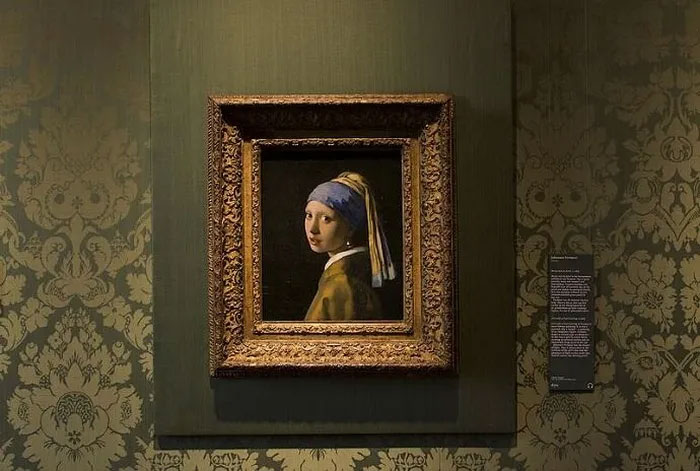Decoding the mystery of the attraction of the painting 'Girl with a Pearl Earring'
On October 2, scientists at the Mauritshuis museum in The Hague (Netherlands) revealed an impressive discovery about the world-famous painting "Girl with a Pearl Earring" by Johannes Vermeer.
This work has been loved for centuries, and now, thanks to modern technology, the reason for its strange appeal has been discovered.
The Mauritshuis collaborated with neuroscientists to measure brain responses as viewers viewed the painting and other famous works of art. The results showed that the portrait triggered a unique neurological phenomenon they called the 'Sustained Attention Loop.' According to the researchers, only the Dutch master's work produced this effect.
When looking at the painting, the viewer's eyes are automatically drawn from the girl's eyes, to her mouth, to the pearl, and then back to her eyes, forming a continuous cycle. This makes it impossible for the viewer to take their eyes off the painting and prolongs the time spent enjoying the work compared to other paintings. Mr. Martin de Munnik - representative of the company Neurensics, which conducted the research - explained: 'You have to pay attention to her, whether you want to or not. You have to love her, whether you want to or not '.

The painting "girl with a pearl earring".
By measuring brain waves, the scientists also found that the prefrontal cortex – the area that controls consciousness and personal identity – was most activated when looking at this work. This was a surprising finding for the research team, even though they already knew that there was something special about Vermeer's portrait.
This study is also the first to use a combination of EEG and MRI brain scans to measure neural responses while viewing art.
In the study, the scientists also compared the brain responses of people when they stood in front of the original painting in the museum and when they looked at the replica. They found that the emotions people experienced when looking at the original were 10 times stronger than when they looked at the reproduction.
This confirms the importance of experiencing art firsthand . "Exposure to art, whether it's photography, dance or the works of the 17th-century classical masters, is important," says Mauritshuis museum director Martine Gosselink. "It develops your brain. and the brain never lies . "

This is a rare Vermeer painting in which the main figure actually looks directly at the viewer.
What sets Girl with a Pearl Earring apart from Vermeer's other works is the way he created three main focal points in the painting : the eyes, the mouth, and the pearl. In most of Vermeer's other paintings, the focus is on a single point, while the surrounding details are blurred.
Gosselink also noted that this portrait is a rare Vermeer painting in which the main figure actually looks directly at the viewer. In his other works, the subject is often engrossed in their work, writing, embroidering or doing other things. "But with this girl, she's looking at you," she said .
According to Martin de Munnik, it would certainly be interesting to see similar research conducted on other famous works, such as Leonardo da Vinci's "Mona Lisa." The new findings not only deepen the admiration for Vermeer's painting, but also emphasize the importance of art in stimulating the brain and creating unforgettable emotions in the hearts of viewers.
- Why is the first-born boy and the girl on the full moon difficult to raise?
- Has the 'most controversial' mystery in the Mona Lisa painting been solved?
- Mysterious decoding student used to be an astronomer
- Decoding unusual paths of the moon
- Why in oysters and shellfish have pearls?
- The reason for not drinking much pearl milk tea
- Enlarging the famous 'Mona Lisa' painting 400 times, experts discover 3 hidden secrets
- Decoding the extremely rare phenomenon behind art masterpieces 'Screams'
- Find the 8,000-year-old 'world's oldest' pearl
- Strange secret hidden behind 7 'haunted' paintings
- Discover the mysteries of Rembrandt's masterpiece
- The 'creepy' mysteries make science 'crazy' when decoding
 'Fine laughs' - Scary and painful torture in ancient times
'Fine laughs' - Scary and painful torture in ancient times The sequence of numbers 142857 of the Egyptian pyramids is known as the strangest number in the world - Why?
The sequence of numbers 142857 of the Egyptian pyramids is known as the strangest number in the world - Why? History of the iron
History of the iron What is alum?
What is alum? Zooming in 10 times on a 140-year-old painting, many people were surprised to discover the 'time travel' detail
Zooming in 10 times on a 140-year-old painting, many people were surprised to discover the 'time travel' detail  Top 5 truths behind Leonardo da Vinci's eternal masterpieces
Top 5 truths behind Leonardo da Vinci's eternal masterpieces  Ancient Egyptian masterpiece so realistic that scientists accurately identified the birds in the painting
Ancient Egyptian masterpiece so realistic that scientists accurately identified the birds in the painting  Van Gogh's paintings contain surprisingly accurate physics knowledge.
Van Gogh's paintings contain surprisingly accurate physics knowledge.  Enlarging the famous 'Mona Lisa' painting 400 times, experts discover 3 hidden secrets
Enlarging the famous 'Mona Lisa' painting 400 times, experts discover 3 hidden secrets  The mysterious images hidden in the masterpieces of art
The mysterious images hidden in the masterpieces of art 